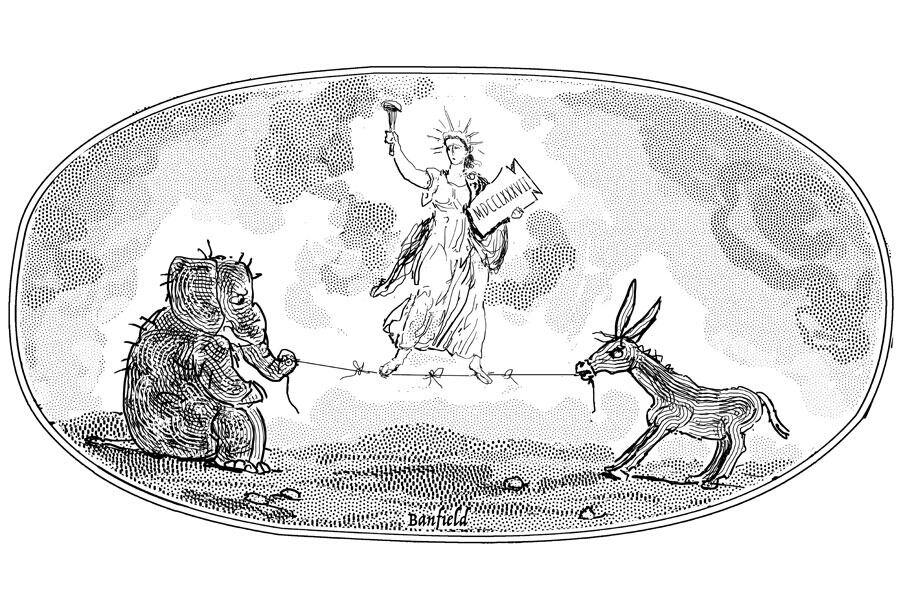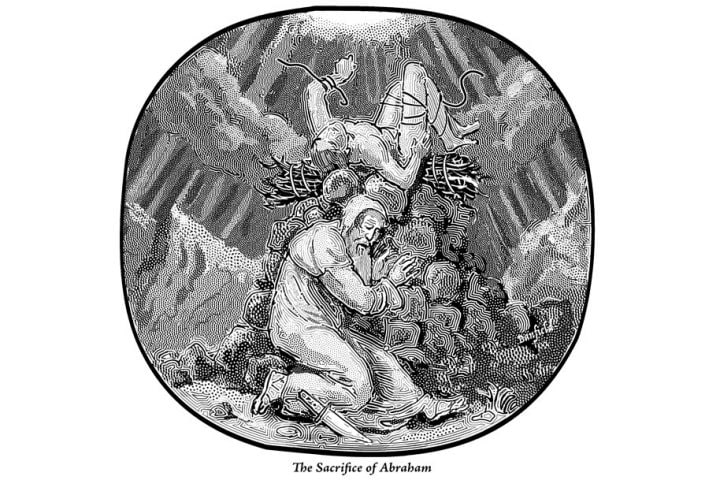Books Reviewed
“If I could not go to heaven but with a party,” Thomas Jefferson wrote to Francis Hopkinson in 1789, “I would not go there at all.” Jefferson’s anti-party sentiments—like those expressed in George Washington’s Farewell Address—are frequently taken by scholars and the public alike as typical of the founding generation.
There is some evidence for their belief. The Constitution makes no mention of political parties. The original presidential selection method, in which votes for president and vice president were not distinguished, was designed for a system without party coordination of voting. This produced a succession of problematic outcomes in 1796, when leaders of opposing parties were chosen as president and vice president, and 1800, when the House of Representatives had to decide the tie between Thomas Jefferson and Aaron Burr.
The Constitution’s silence has led many to conclude the Constitution is “against” parties. In The Framers’ Intentions: The Myth of the Nonpartisan Constitution, Utah State political scientist Robert Ross argues this conclusion is deeply misleading. The founders, after all, engaged in some of the nastiest partisanship in American history. Ross acknowledges that the “constitutional system…was intended to work against [parties],” but contends that the Constitution, as subsequently interpreted by the generation that ratified it, actually supported and institutionalized partisanship in order to realize the Constitution’s promise of republicanism and popular sovereignty.
Ross also challenges the claim that the founders viewed parties as emergency instruments for the eventual abolition of parties themselves, that Hamilton’s Federalist Party and Jefferson’s Republican Party were but “parties to end parties.”
Parties did nearly vanish from American politics during the early 19th century “Era of Good Feelings,” replaced by candidate-centered elections and intra-party factions within the Jeffersonian party. Their prolonged absence for over a decade, within a generation of the Constitution’s ratification, seemed to vindicate James Monroe’s notion that “our government may get on and prosper without the existence of parties.”
The fallout of the Era of Good Feelings, however, was not unity but another presidential election thrown to the House and the “corrupt bargain” (Andrew Jackson’s supporters’ term) that gave John Quincy Adams the presidency in 1824. According to the traditional account Martin Van Buren emerged out of this chaos to provide, for the first time, a positive defense of the two-party system and party loyalty.
* * *
The Framers’ Intentions provides a more accurate and satisfactory explanation for the role of parties in our political system, demonstrating how, through a variety of quasi-constitutional decisions, leading thinkers and actors interpreted the Constitution as a pro-party document. Though the decisions Ross discusses are disjointed—producing a somewhat scrambled narrative—they are both fascinating in their own right and point to important conclusions.
His examination of the politics involved in making electoral rules—from the 12th Amendment (which separated votes for president and vice president in the Electoral College, recognizing the role of party tickets), to the establishment of the “winner-take-all” system for presidential elections, to the abolition of the same system in House elections by the 1842 Apportionment Act’s congressionally-mandated single-member House districts—are illuminating. In each instance, Ross concludes, politicians worked to create a system that “acknowledged the existence of political parties and resolved electoral uncertainty without disadvantaging a minority party.” The authors of the 12th Amendment “intentionally and constitutionally grounded party politics and allowed an opposition continued political access.” The winner-take-all system of apportioning Electoral College delegates that eventually emerged, instead of election by state legislatures or by popular vote in districts, “further entrenched the constitutional construction of partyism in presidential elections” by making it less likely that the minority party in a state or candidates outside of the two main parties would receive any Electoral College votes. And in debates over single-member House districts “Whigs and certain Democrats constructed a principled account of representation within a two-party system,” which “further entrenched political parties in American politics by creating electoral rules favoring a two-party system.”
In short, Ross suggests that American statesmen found the Constitution to be most workable and effective not through the suppression but the encouragement of party conflict and organization. This was mostly accomplished while the framers were still involved in politics—not by later innovations.
Though it’s news to most observers, political parties are increasingly irrelevant, exerting far less control over the nomination of candidates, fundraising operations, platforms, and members in the legislative and executive branches, than before. In addition, civil service reform has deprived them of the most important currency they once wielded: the distribution of jobs to loyal supporters.
The consequences of party decline are poorly understood, but Ross’s account suggests that the weakening of parties is not something to celebrate. The framers needed parties to accomplish the Constitution’s goals. Parties made government responsive to the people. Without them, public opinion could not be organized, mobilized, and made effective. The framers understood parties to be necessary instruments of republican government. By implication, today’s weakening of parties threatens our republican form of government.
* * *
Party leaders at the late 19th century height of American party power understood this—even if their methods were sometimes unscrupulous. New York politician George Washington Plunkitt, whose lectures are uproariously preserved in Plunkitt of Tammany Hall (1905), described this wisdom succinctly. “I ain’t up on sillygisms,” he granted,
but I can give you some arguments that nobody can answer. First, this great and glorious country was built up by political parties; second, parties can’t hold together if their workers don’t get the offices when they win; third, if the parties go to pieces, the government they built up must go to pieces, too; fourth, then there’ll be h— to pay.
What kind of hell?
[W]hat is goin’ to happen when civil service crushes out patriotism? Only one thing can happen: the republic will go to pieces. Then a czar or a sultan will turn up, which brings me to the fourthly of my argument—that is, there will be h— to pay. And that ain’t no lie.
Though light on specifics, Plunkitt grasped that political parties were essential—albeit imperfect—instruments of republican government. They “built up” the country by mobilizing voters, nominating candidates, formulating platforms, and coordinating the actions of government so that the will of the people could be made effective.
* * *
Party-less government means one person—the executive—tends to make all governing decisions, rather than the people collectively through a party. Party government or executive government—take your pick. A moment’s reflection shows which one America chose. As parties have weakened, Congress has descended to irrelevance and the presidency grown to such importance that presidents now appoint “czars” to make and implement policy.
The story of political parties’ decline, and how that decline led to Congress’s, has yet to be told. Until then, The Framers’ Intentions provides a valuable service by showing the essential role parties have played in making workable our republican government.





